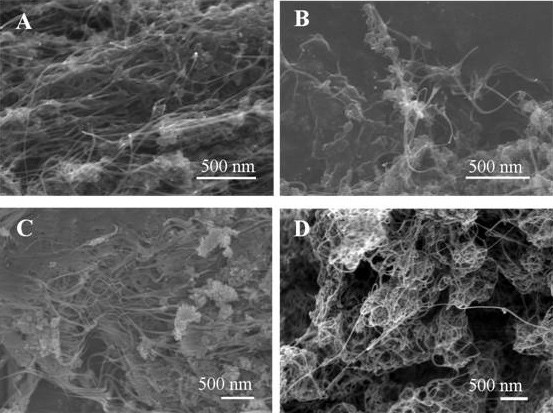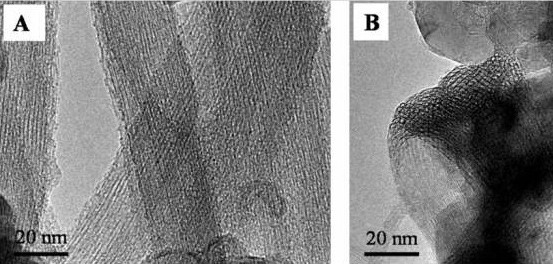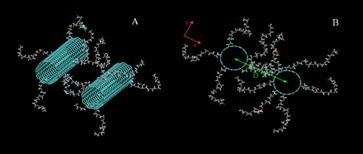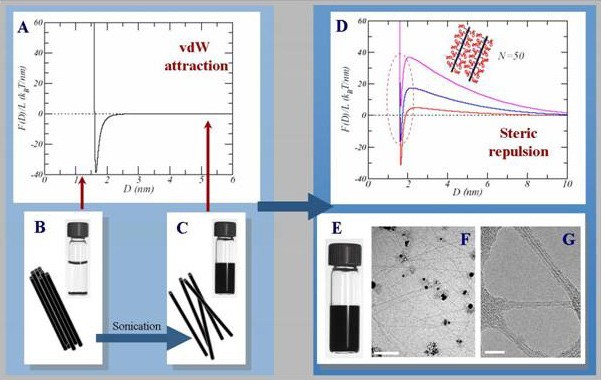Dispersion of Carbon nanotubes
Dispersions of carbon nanotubes using a non-covalent approach
Single walled Carbon nanotubes (SWNT) are graphitic structures with a typical diameter of 0.8-2
nm, and a length of up to millimeters. The unique structural, mechanical and electronic
properties of the individual tubes offer promise in diverse fields of application including 

molecular electronics, composite materials, energy storage, and biomedical applications. A major obstacle for SWNT utilization is their low dispersability resulting from the high cohesion energy among pristine tubes. With a typical contact energy of 40,000 kT, for 1 micron long SWNT, the tubes form vdW crystalline bundles or ropes of about a hundred tubes that further entangle into networks, that are non-dispersible in most common solvents, presenting an obstacle for their utilization.
Dispersion of individual SWNT and Multi-walled carbon nanotubes (MWNT) in a solvent, whether an aqueous or organic, is a pre-requisite for their utilization as additives in polymeric matrices. The non-covalent approach allows one to disperse individual tubes in a liquid, while preserving their unique electrical and mechanical properties which are strongly altered in covalently modified CNT. 
For details See I. Szleifer et. al (Langmuir 2004, JACS 2004, Polymer 2005, Soft Matter 2006, Macromolecules 2007 APS 2007,
Over the last few years we have developed the “non-wrapping” approach for dispersing carbon nanotubes in aqueous (and organic, see paper JPHYS Chem C) solutions utilizing physically adsorbed polymers as steric repellants; The different systems are described in papers no. JACS 2004, Polymer 2005, Macromolecules 2007. The mechanism of the "non-wrapping" approach has been elucidated in collaboration with Prof. Igal Szleifer (Northwestern University) . Here the CNT are sonicated (at very low energies) in a polymer solution. Sonication results in de-agglomeration of the tubes and simultaneous adsorption of the solvated polymers. The polymer-decorated CNT experience entropic repulsion which prevents the re- aggregation of the tubes. The development of this approach for manipulation of nanotubes has enabled us (and others) to investigate the solution properties of carbon nanotubes, their interaction with other materials, and opened new directions for technological utilization of carbon nanotubes (NES 2009 -2014, MAGNET, generic industry-oriented technological research of carbon-nanotubes based materials.
CNT networks; templated growth of fullerene crystals
Carbon nanotubes (CNT) and fullerenes form van-der Waals crystals. Unlike covalent or ionic crystals where the relations between structure and properties are well understood the structures and physical properties of self-assembled structures based on vdW interactions are sensitive to the thermal energy, the presence of templating moieties and surfaces. Molecularly engineered supra-structures comprising CNTs scaffolds decorated by fullerene molecules and fullerene assemblies are an example of a hybrid supra -structure that may combine the electronic and mechanical properties of CNTs with the optical and excellent electron acceptor characteristic of the fullerenes.
In this project we design and characterize a library of supra-structures comprising scaffolds of non-functionalized, individual CNTs and fullerenes assemblies. We expect that the geometry and dipole moment of CNT will affect the self-organization of the fullerene molecules at the CNT surface, via a mixture of dispersion forces, and dipolar interactions leading to the formation of new types of hybrids with electrical and optical properties that depend on the nano-structure, and the intermolecular interactions.
We ask what is the interaction mechanism between CNT and different types of polymers and whether we can we develop a generic understanding of the interactions that could be utilized for developing an intuition?


